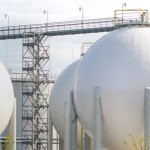Copper fell by more than 2% to hit the lowest in two weeks and a half on fears Chinas economy may weaken further after a recent series of downbeat economic data, ahead of GDP figures due tomorrow. A gauge of manufacturing activity in the US also disappointed.
On the Comex division of the New York Mercantile Exchange, copper futures for settlement in May fell by 2.15% to $2.9820 per pound by 14:47 GMT. Prices held in a daily range between $3.0470 and $2.9655 a pound. The red metal added 0.2% on Monday to close at $3.0475.
Industrial metals plummeted, pressured down by concerns the worlds biggest consumer will fail to meet its economic growth target. The Asian nations broadest measure of new credit fell by 19% from a year earlier.
The Peoples Bank of China also reported that money supply grew at the slowest rate on record, fueling fears of a larger-than-expected slowdown. The Chinese M2 Money Stock rose at an annualized 12.1% pace, failing to meet analysts projections for 13.0% growth, down from the preceding periods 13.3%.
China’s National Bureau of Statistics is expected to report early on Thursday that the Asian economy grew by 1.4% in the first quarter, down from 1.8% in the last three months of 2013. Year-on-year, growth is expected to have slowed to 7.3% from 7.7% in Q4, below the government’s official target of 7.5% and near the minimum level needed to ensure stable employment.
In the US, the Federal Reserve Bank of New York reported that manufacturing activity in the region grew at the slowest pace since December. The NY Empire State Manufacturing Index registered at 1.29 in April, defying analysts expectations for a jump to 8.00 from Marchs reading at 5.61.
However, an overall brighter recovery outlook in the US put a floor under prices as consumer inflation accelerated in March, although it remained below Feds long-term 2% target.
The Bureau of Labor Statistics report put annual CPI growth for the month of March at the comforting 1.5%, beating experts’ forecast of 1.4%, while the monthly CPI growth was at a 0.2% rate, also outperforming the 0.1% forecast. Core CPI reached 1.7% growth on an annual basis and 0.2% on a monthly basis.
Rising shelter costs accounted for almost two-thirds of the Core CPI growth. Elsewhere, while food prices were brought up 0.4% by a drought in the West, a 1.7% fall in gasoline prices, alongside a decrease of 0.1% in energy costs limited inflation growth. Despite the jump in inflation, it remained below Fed’s official long-term target of 2.0%, ensuring interest rates will remain at rock bottom for some time.
On Wednesday, data is expected to show a rise in housing starts in March and a minor decline in the issuance of building permits. A separate report will likely show a second straight monthly expansion in industrial production, by 0.5%, after activity in the sector contracted by 0.3% in January.





